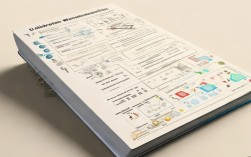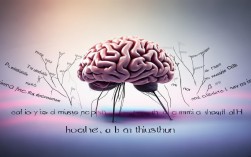下面我将为你提供一个总纲性的思维导图结构,并针对不同类型的写作(如议论文、说明文、记叙文)提供具体的分支内容,我会告诉你如何自己动手制作这个思维导图。

英语写作总纲思维导图
这个导图可以适用于绝大多数英语写作任务,从段落到整篇文章。
中心主题:English Writing (英语写作)
-
Pre-writing (构思与准备)
- 1. Understand the Task (理解任务)
- Prompt Analysis (分析题目): What is the topic? (主题是什么?) What is the question asking? (问题在问什么?) What is the required format (e.g., essay, email, report)? (要求什么格式?)
- Identify Keywords (找出关键词): Analyze words like "analyze," "compare," "argue," "describe." (分析“分析”、“对比”、“论证”、“描述”等指令词)
- Purpose (写作目的): To inform? To persuade? To entertain? (是为了告知、说服还是娱乐?)
- 2. Brainstorm & Research (头脑风暴与研究)
- Mind Mapping (思维导图): Write the central topic and draw branches for all related ideas. (写下中心主题,为所有相关想法画分支)
- Freewriting (自由写作): Write non-stop for 5-10 minutes about the topic. (就主题不间断地写5-10分钟)
- Asking Questions (5W1H): Who? What? Where? When? Why? How? (谁?什么?哪里?何时?为什么?如何?)
- Research (研究): Find facts, data, quotes, and examples to support your ideas. (寻找事实、数据、引言和例子来支撑你的观点)
- 3. Outline (列提纲)
- Thesis Statement (中心论点): The main idea of your entire essay. (全文的核心观点)
- Main Ideas (主要论点): 2-4 key points that support your thesis. (支持中心论点的2-4个关键点)
- Supporting Details (支撑细节): Examples, evidence, explanations for each main idea. (每个主要论点的例子、证据、解释)
- Conclusion (: Restate thesis, summarize main points, final thought. (重申论点,总结要点,给出最终思考)
- 1. Understand the Task (理解任务)
-
Drafting (起草)
- 1. Introduction (引言)
- Hook (钩子): Grab the reader's attention (a question, a quote, a surprising fact, a story). (吸引读者注意力的引子)
- Background Information (背景信息): Provide context for the topic. (提供主题背景)
- Thesis Statement (中心论点): Clearly state your main argument. (清晰陈述你的主要论点)
- 2. Body Paragraphs (主体段落)
- Topic Sentence (主题句): State the main idea of the paragraph. (陈述本段的核心观点)
- Explanation (解释): Explain your topic sentence in your own words. (用自己的话解释主题句)
- Evidence/Evidence (证据): Provide specific examples, facts, or quotes. (提供具体的例子、事实或引言)
- Analysis (分析): Explain HOW the evidence supports your topic sentence. (解释证据如何支持你的主题句)
- Concluding Sentence (总结句): Wrap up the paragraph and link to the next one. (总结本段内容并连接到下一段)
- 3. Conclusion (
- Restate Thesis (重申论点): Paraphrase your thesis statement. (用不同的话重述中心论点)
- Summarize Main Points (总结要点): Briefly remind the reader of your main arguments. (简要提醒读者你的主要论点)
- Final Thought/Call to Action (最终思考/行动号召): End with a strong, memorable statement or a suggestion for future action. (以一个强有力的、令人难忘的陈述或对未来行动的建议结束)
- 1. Introduction (引言)
-
Revising & Editing (修改与校对)
- 1. Revising (修改 - 内容和结构)
- Content (内容): Is my thesis clear? Are my arguments strong? Is there enough evidence? (我的论点清晰吗?我的论证有力吗?有足够的证据吗?)
- Structure (结构): Is the organization logical? Do the paragraphs flow well? Are there smooth transitions? (组织逻辑合理吗?段落衔接流畅吗?过渡自然吗?)
- Clarity & Style (清晰度和风格): Is my language clear and precise? Is the tone appropriate? (我的语言清晰准确吗?语调合适吗?)
- 2. Editing (校对 - 语言和语法)
- Grammar (语法): Check for subject-verb agreement, tense consistency, etc. (检查主谓一致、时态一致性等)
- Spelling (拼写): Check for spelling errors. (检查拼写错误)
- Punctuation (标点): Check for correct use of commas, periods, etc. (检查逗号、句号等标点符号的正确使用)
- Word Choice (措辞): Use a thesaurus to find better words. (使用词典寻找更合适的词)
- 3. Proofreading (最终审阅)
- Read the essay aloud to catch mistakes. (大声朗读文章以发现错误)
- Ask a friend or classmate to read it. (请朋友或同学阅读)
- 1. Revising (修改 - 内容和结构)
针对不同写作类型的思维导图分支
在“Main Ideas (主要论点)”和“Supporting Details (支撑细节)”部分,根据不同文类,内容会有所侧重。
A. 议论文
- 中心主题: Argumentative Essay (议论文)
- Thesis Statement (中心论点): Must be debatable. (必须有争议性)
- Example: "While some argue that social media is beneficial for communication, its negative impact on mental health and productivity outweighs the advantages."
- Main Idea 1 (主要论点 1): Pro side (正面论证)
- Supporting Detail: Example 1: Staying connected with family abroad. (例子:与海外家人保持联系)
- Supporting Detail: Example 2: Access to information and news. (例子:获取信息和新闻)
- Main Idea 2 (主要论点 2): Con side (反面论证)
- Supporting Detail: Evidence 1: Studies linking social media use to anxiety and depression. (证据:研究显示社交媒体使用与焦虑、抑郁有关)
- Supporting Detail: Evidence 2: Decrease in face-to-face communication skills. (证据:面对面沟通能力下降)
- Main Idea 3 (主要论点 3): Refutation & Rebuttal (驳斥与反驳)
- Supporting Detail: Acknowledge the pro side ("Admittedly, social media helps..."). (承认对方观点)
- Supporting Detail: But argue that the cons are more significant ("However, this benefit is overshadowed by..."). (但论证缺点更显著)
- Conclusion (: Reaffirm your position that the cons are greater. (重申你认为缺点大于优点的立场)
- Thesis Statement (中心论点): Must be debatable. (必须有争议性)
B. 说明文
- 中心主题: Expository Essay (说明文)
- Thesis Statement (中心论点): States the process, definition, or comparison. (陈述过程、定义或对比)
- Example (Process): "The process of photosynthesis involves three main stages: light absorption, water splitting, and carbon fixation."
- Example (Definition): "Democracy is a system of government where power is vested in the people, exercised either directly or through elected representatives."
- Main Idea 1 (主要论点 1): Step 1 / Aspect 1 (步骤1 / 方面1)
- Supporting Detail: Detailed explanation of this step/aspect. (对此步骤/方面的详细解释)
- Supporting Detail: Illustration or example. (图解或例子)
- Main Idea 2 (主要论点 2): Step 2 / Aspect 2 (步骤2 / 方面2)
- Supporting Detail: Detailed explanation. (详细解释)
- Supporting Detail: Illustration or example. (图解或例子)
- Main Idea 3 (主要论点 3): Step 3 / Aspect 3 (步骤3 / 方面3)
- Supporting Detail: Detailed explanation. (详细解释)
- Supporting Detail: Illustration or example. (图解或例子)
- Conclusion (: Summarize the key points and explain the significance or final outcome. (总结要点并解释其重要性或最终结果)
- Thesis Statement (中心论点): States the process, definition, or comparison. (陈述过程、定义或对比)
C. 记叙文
- 中心主题: Narrative Essay (记叙文)
- Thesis Statement (中心论点): Often a lesson learned or a main theme. (通常是学到的教训或主要主题)
- Example: "My first day of teaching taught me that patience and preparation are the cornerstones of effective education."
- Setting (背景设定): Where and when did the story take place? (故事发生的地点和时间)
- Supporting Detail: Describe the place, time, and atmosphere. (描述地点、时间和氛围)
- Characters (人物): Who are the main characters? (主要人物是谁)
- Supporting Detail: Describe their appearance, personality, and role. (描述他们的外貌、性格和角色)
- Plot (情节 - 按时间顺序):
- Exposition (开端): Introduce the characters and setting. (介绍人物和背景)
- Rising Action (发展): Events that build tension. (制造紧张感的事件)
- Climax (高潮): The turning point or most exciting moment. (转折点或最激动人心的时刻)
- Falling Action (结局): Events after the climax leading to the resolution. (高潮后导向结局的事件)
- Resolution (解决): How the conflict is resolved. (冲突如何解决)
- Conclusion (: Reflect on the experience and state the lesson learned. (反思经历并总结教训)
- Thesis Statement (中心论点): Often a lesson learned or a main theme. (通常是学到的教训或主要主题)
如何制作你的思维导图
-
工具选择:
- 手绘: 最直观、自由,拿一张大白纸,在中间写下主题,然后向四周画出分支。
- 软件:
- XMind / MindNode: 功能强大,界面友好,适合电脑和手机。
- Coggle / Miro: 在线协作工具,界面美观,支持图片和链接。
- FreeMind: 免费开源的经典软件。
-
制作步骤:
- 第一步:中心主题。 在纸张或软件中央写下 "English Writing"。
- 第二步:主干。 画出第一层分支,对应写作的三个主要阶段:Pre-writing, Drafting, Revising & Editing。
- 第三步:分支。 在每个主干下,画出更细的分支,填充上我为你提供的具体内容,在 "Pre-writing" 下画出 "Understand the Task", "Brainstorm", "Outline"。
- 第四步:细化。 继续为每个分支添加更小的分支和关键词,在 "Outline" 下添加 "Thesis Statement", "Main Ideas" 等。
- 第五步:个性化。 根据你正在写的文章类型,选择对应的分支(议论文、说明文或记叙文),并将其内容添加到你的导图中,使用不同颜色来区分不同的部分,让导图更清晰。
思维导图的最大优势在于它的可视化和灵活性。 你不必完全拘泥于这个结构,可以根据自己的写作习惯进行调整,最重要的是,它能让你在动笔前对文章的全貌有一个清晰的把握,从而写出更有条理、更有深度的文章,祝你写作顺利!











